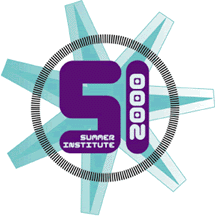OpenFPGA Consortium Incorporates, Names Board of Directors
The OpenFPGA Consortium has announced that it has become an incorporated non-profit organization.
Since 1987, OSC has been providing our clients services in four areas, or functions:
Supercomputing. OSC provides the computational power and storage that scientists need to meet their research goals. Whether researchers need to harness the incredible power of a parallel processor cluster to better understand deep space, a vector processor machine to do weather modeling, or a mid-size shared memory processor system to model the human heart, OSC has the hardware and software solutions to meet their needs.
Research. A staff of high performance computing and networking research experts maintain active research programs in HPC and Networking, Homeland Security and Defense, Environmental Sciences, Engineering and Life Sciences. Our goals are to lead science and engineering research efforts, assist researchers with custom needs and collaborate with regional, national and international researchers in groundbreaking initiatives.
Education. OSC has a national reputation for its training and education programs. Staff teach faculty and student researchers through scientific computing workshops, one-on-one classes, and web-based portal training. Ohio students gain exposure to the world of high performance computing and networking during our annual summer institutes for young women in middle school and for junior and senior high school students. And, the statewide, virtual Ralph Regula School of Computational Science coordinates computational science and engineering education activities for all levels of learning.
Cyberinfrastructure. The Ohio Supercomputer Center’s cyberinfrastructure and software development researchers provide the user community with various high performance computing software options. This variety enables researchers to select parallel computing languages they most prefer, and just as important, it creates a test bed for exploring these systems. By taking a holistic approach to generating efficient supercomputing applications for researchers, the Center’s cyberinfrastructure and software development research capitalizes on all the components within the cycle of innovation — development, experimentation, and analysis - and continuously improves the services provided.
The OpenFPGA Consortium has announced that it has become an incorporated non-profit organization.
Ohio businesses facing the challenges of keeping pace with constantly changing technology will soon have a solution. With the financial support of the Ohio Technology Action Fund and other organizations, Platform Lab, a software testing and development facility, has announced that advanced scheduling is available to organizations and businesses.
Steven I. Gordon, interim co-executive director of the Ohio Supercomputer Center, has been honored by the American Institute of Certified Planners with the announcement of his selection to its College of Fellows.
Miami University has received 6 fiber optic strands as a gift from alumnus Robert C. Schuler, of Dublin, Ohio. The strands of fiber are part of the Loop connecting Oxford, Hamilton, Middletown and Evendale. The estimated value of the gift is more than $1 million. Miami leases 12 fiber optic strands of the Loop from the county, which are used for network communications among the university's Ohio campuses.
A new study from the Technology Policy Group (TPG) offers a great deal of evidence that many automotive suppliers need to accelerate their adoption of e-business practices to remain competitive.
Two Ohio State University astronomy researchers have established an international reputation for using X-rays and supercomputers to search the vast depths of space to identify elusive black holes. Now, they and their interdisciplinary colleagues are repositioning their scientific methodology to peer into the human body to enhance cancer therapy and diagnostics (theranostics).
Spending two days at a new Ohio Supercomputer Center (OSC) workshop may save you hundreds of hours and make your computing life easier.
Whether your discipline is bioinformatics or astronomy, the OSC workshop, "I/O Approaches for Data Intensive Computing," is specially designed for users with extremely large datasets. It will be held on May 9 and 10 from 9:30 a.m. to 5:30 p.m. in OSC's BALE theater and is offered at no charge. The workshop and materials are geared toward those with parallel programming experience, using MPI in either C or Fortran.
 OSC (Ohio Supercomputer Center) and The Ohio State University (OSU) will present SI00:Adventures in Computing and Networking on July 17-28, 2000.
OSC (Ohio Supercomputer Center) and The Ohio State University (OSU) will present SI00:Adventures in Computing and Networking on July 17-28, 2000.
The Ohio Supercomputer Center today announced the names of 15 elementary and middle school girls from six Ohio counties competitively chosen to attend the 2009 Young Women’s Summer Institute.
Ohio Supercomputer Center (OSC)
Overall Objective
To integrate the models, people, communications and computers required to perform a coupled storm-resolving atmospheric and Great Lakes model predictions.
ACTS Experiment Objectives
To use the high data rate channel of the NASA ACTS to: